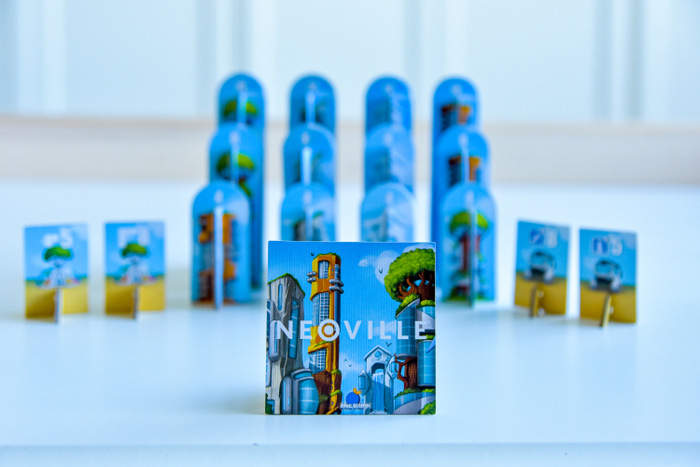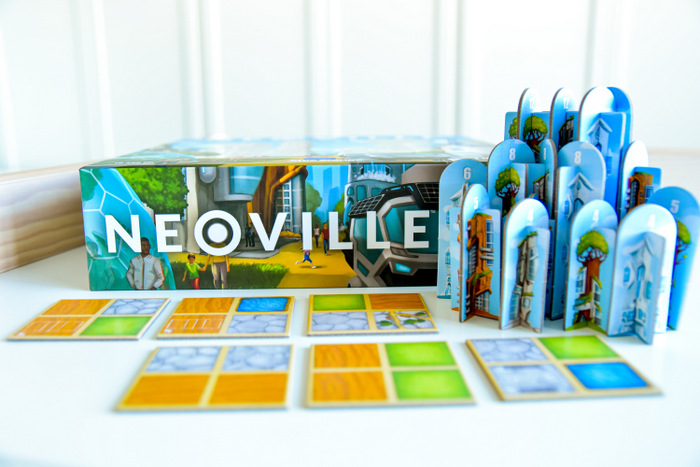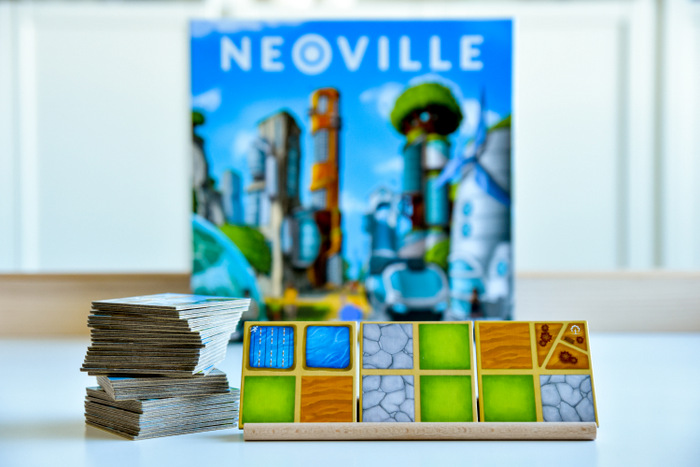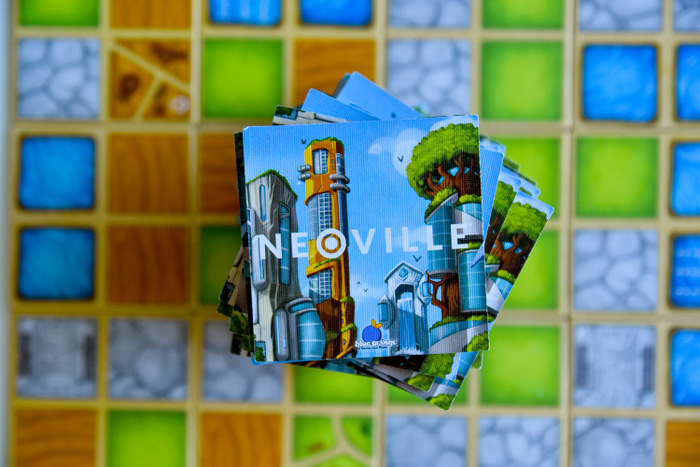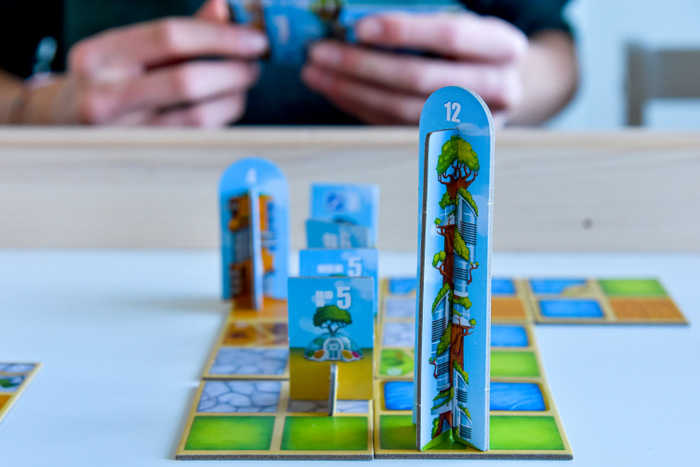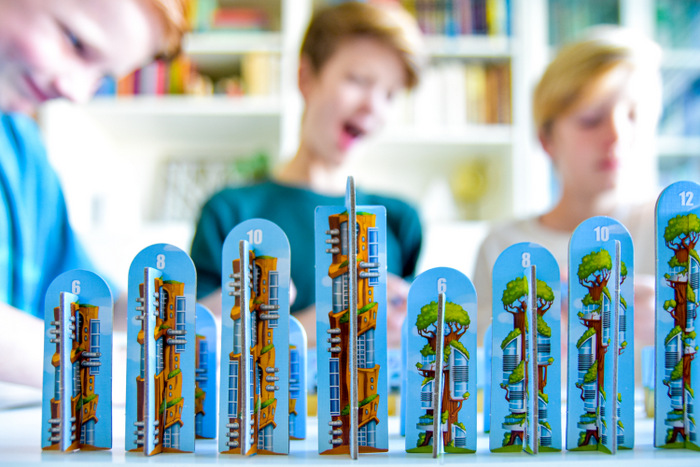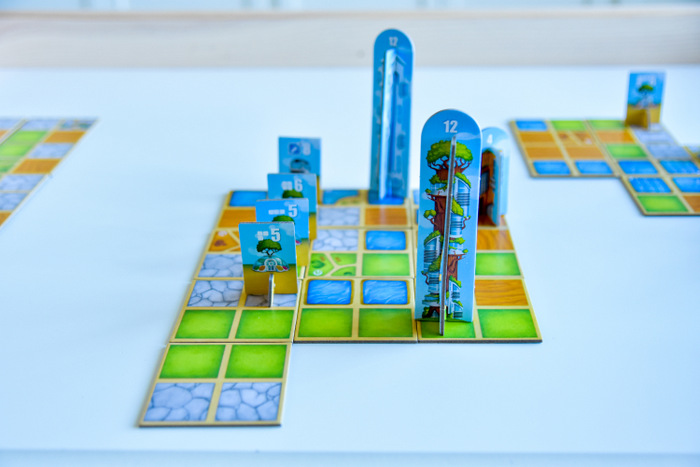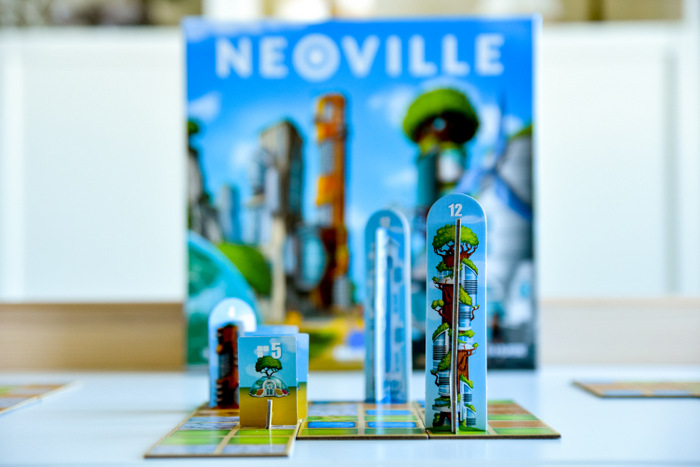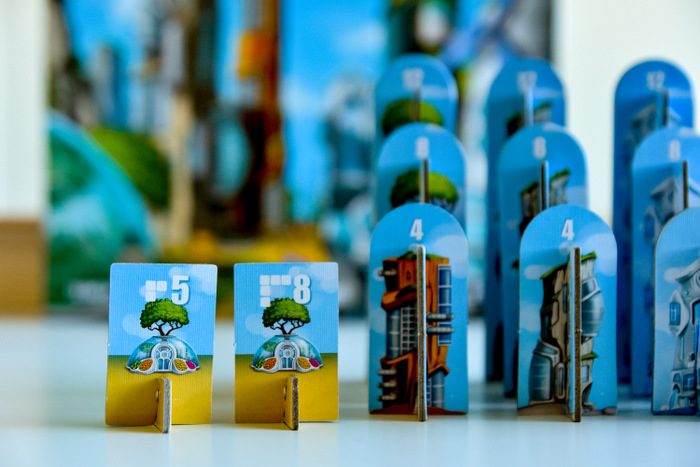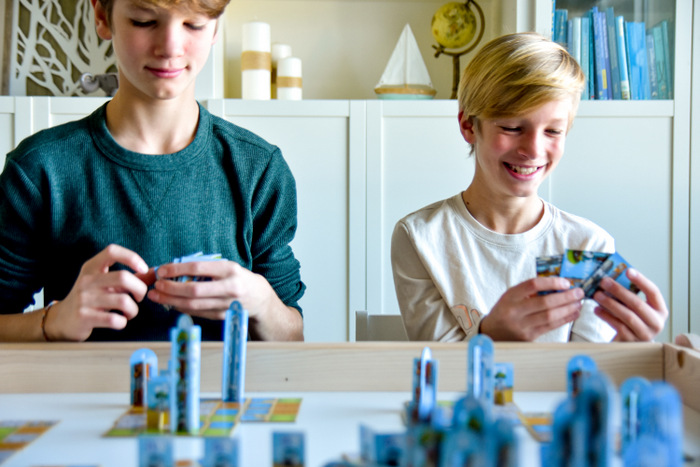What’s your preferred environment? Do you feel most at one with nature when surrounded by EARTH, FOREST, STONE, or WATERFALL? It’s up to you to build the organically accoutered city of your dreams in NEOVILLE, a city building logic game for 2-4 players, ages 10+, in about 45 minutes!
Each player begins the game with three Equity tiles, one of which has a number (1-4) on the back and is assigned in turn order. These tiles are meant to balance out the turn-order discrepancy so tile 4 is the best followed by tiles 3, 2, and 1 to give players an equal footing.
As for the rest of setup, the skyscrapers are set out within reach of all players, as are the utilities. Create a 4-card tableau and draw pile and the game is ready to begin!
On a turn, players take the following actions:
- Add a tile from your hand to your “city,” which is a 4×4 grid of space in front of you, following placement rules/
- New tiles must be connected to others by at least 1 side.
- Tiles do not have to match like dominoes.
- Tiles can be rotated any direction.
- Tiles cannot be moved or replaced after initially placed.
- Districts with skyscrapers cannot be connected.
- Optional: Take a skyscraper or utility and place it on the new tile.
- Skyscrapers and terrain squares must match.
- Only one skyscraper per district.
- Skyscrapers and utilities cannot go on a Park or Sport Facility square.
- Utilities CAN go in an occupied district.
- Draw a new tile from the available face up pile or from the top of the draw stack.
The goal of the game is to get the most points by building skyscrapers and placing utilities.
A value 10 skyscraper, for example, will score the player 10 points at the end of the game if it is in a district (section of adjacent terrain squares that match the skyscraper type) with at least 10 terrain squares. A player can take a value 10 skyscraper as soon as he has a single terrain square of that type and work to build that district up to 10 terrain squares, but if he is unable to by the end of the game, he gets -10 points.
Each skyscraper is worth the number of points listed if placed in a district with a matching number of terrain squares by the end of the game OR get an equivalent negative point value if not.
There are three different types of utilities that can score points.
- Ecomobiles score points if placed in a square that has the number of Park and/or Sport Facility features equal to or greater than the required number (indicated on the utility tile) in its row and column.
- Windmills score points if placed on one of the tiles highlighted in the diagram on the tile.
- Biodomes score points if placed in a square that is part of the formation shown on the tile.
And finally, the player with the most parks in their city gets 5 end-game points and the player with the most Sport Facilities in their city gets 5 end-game points.
When each player has taken exactly 16 turns and has built a 4×4 city of tiles, skyscrapers, utilities, parks, and sports facilities, the game ends. Scores are tallied and the most creative and clever architect is announced as the NEOVILLE winner!
This building/grid/logic game is a wonderful gameschooling resource for math-brain thinking skills, strategy, arithmetic, logic, and visual/spatial awareness. Children learn many interpersonal skills through playing games as well – turn taking, problem solving, conflict resolution, flexibility, and more. The colorful, well-made components have an interesting design that could provide a whole week’s worth of lessons and deep-diving into a study of architecture and architects. Blue Orange Games has so many wonderful games with such a wide variety of themes and designs to create solid gameschooling learning opportunities and lessons. Thanks so much for sharing with us!

